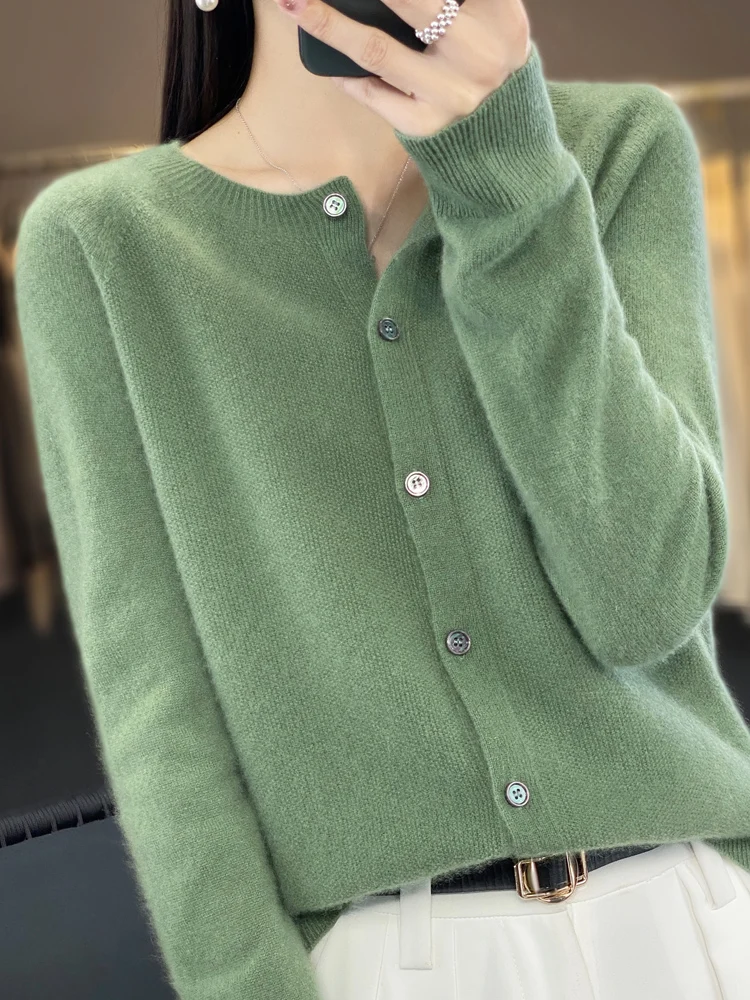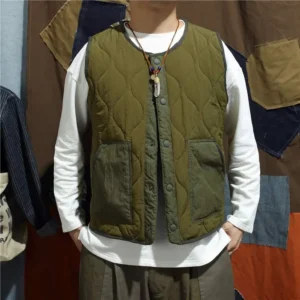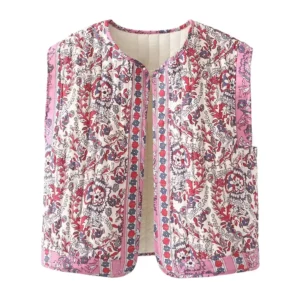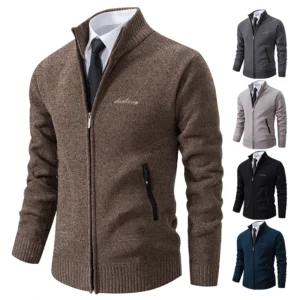Introduction: Understanding the Need for Ethical Cashmere
Cashmere stands as one of the world’s most coveted luxury fibers, prized for its exceptional softness, impressive warmth-to-weight ratio, and remarkable durability. This natural fiber has adorned the wardrobes of discerning individuals for centuries, offering unparalleled comfort and elegance. However, behind the luxurious exterior of traditional cashmere production lies a growing web of ethical concerns that demand our attention.
The conventional cashmere industry faces significant challenges regarding animal welfare. Many goats experience over-combing practices that leave them vulnerable to harsh weather conditions, particularly in the bitter cold winters of their native regions. This intensive harvesting can cause stress and health problems for the animals.
Environmental impacts present another critical issue. The increasing global appetite for cashmere has led to larger herd sizes, resulting in overgrazing that strips fragile ecosystems of vegetation. This process accelerates desertification and soil erosion across vast landscapes, threatening biodiversity and the livelihoods of traditional herding communities.
Social responsibility concerns complete this troubling picture, with questions about fair compensation for herders and safe working conditions throughout the supply chain. These interconnected issues highlight why ethical considerations in cashmere production have become increasingly important to consumers worldwide.
The ethical luxury market has seen remarkable growth, with one recent industry report noting a 23% increase in consumer preference for responsibly sourced luxury goods. Certifications have emerged as the primary tool for addressing these concerns, establishing verifiable standards and providing the transparency and accountability needed throughout complex global supply chains.
For those interested in how these ethical considerations translate into everyday wear, understanding styling tips for cashmere cardigans can help consumers make the most of their responsible investments.
In the following sections, we’ll explore the major certifications that help ensure your cashmere is produced with care for animals, environment, and people—providing a comprehensive guide to making informed choices about this precious luxury fiber.
What Makes Cashmere Truly Ethical?
Ethical cashmere production rests on four essential pillars that work together to ensure responsibility at every stage of creation:
Animal Welfare Standards
– Humane treatment during combing and handling
– Protection from extreme weather conditions
– Appropriate nutrition and veterinary care
– Natural behavior allowanceEnvironmental Stewardship
– Sustainable grazing practices preventing overgrazing
– Land management preserving fragile ecosystems
– Biodiversity protection in native cashmere-producing regions
– Waste reduction throughout processingSocial Responsibility
– Fair wages for herders and workers
– Safe working conditions throughout the supply chain
– Support for traditional herding communities
– Gender equality and opportunityTraceability and Transparency
– Ability to track fiber from specific herds to final products
– Clear documentation at each production stage
– Open communication about processes and challenges
– Accessible information for consumers
Certifications matter beyond marketing claims because they provide independent verification of these practices. Without third-party assessment, it becomes difficult to distinguish between genuine ethical commitment and greenwashing—the practice of making unsubstantiated or misleading claims about environmental or ethical practices.
The cashmere industry has seen its share of unverified claims about “sustainable” or “ethical” production that fail to stand up to scrutiny. Legitimate certifications help combat this problem by requiring evidence and regular audits rather than accepting promises at face value.
Understanding what makes cashmere special as a natural fiber helps explain why protecting its production through ethical practices is so important—not just for animals and environments, but for preserving the exceptional quality that makes cashmere worth cherishing.
The Good Cashmere Standard (GCS)
The Good Cashmere Standard (GCS) emerged as a groundbreaking initiative of the Aid by Trade Foundation to address the growing need for animal welfare and sustainability standards in cashmere production. This certification takes a holistic approach to ethical cashmere by focusing on three interconnected pillars.
At the core of GCS lies the Five Domains of Animal Welfare model—a comprehensive framework that goes beyond the traditional “five freedoms” concept. This model assesses:
- Nutrition (access to adequate food and water)
- Environment (appropriate shelter and comfort)
- Health (disease prevention and veterinary care)
- Behavioral interactions (natural socialization opportunities)
- Mental state (minimizing stress and promoting positive experiences)
The GCS certification criteria are rigorous and specific. For animal welfare, goats must have access to proper nutrition year-round, including during harsh winter months. Herders must provide appropriate shelter from extreme weather conditions and follow strict protocols for health management, including regular veterinary check-ups and proper combing techniques that minimize stress.
Environmental management standards focus on sustainable grazing practices that prevent overgrazing and promote land regeneration. Herders must implement rotation systems that allow vegetation to recover and maintain biodiversity in these fragile ecosystems.
The social responsibility component ensures fair labor practices throughout the supply chain. This includes fair compensation for herders, safe working conditions, and community development initiatives that support education and healthcare in herding communities.
What sets GCS apart is its verification process. Independent third-party auditors conduct regular on-site inspections of farms and processing facilities. The certification requires complete traceability from farm to finished product, with documentation at every stage of production.
Many leading retailers and brands have embraced GCS certification as part of their commitment to responsible luxury. For consumers looking to support ethical practices while enjoying premium quality, cashmere sweaters bearing the GCS certification offer assurance of responsible production.
Sustainable Fibre Alliance (SFA) Cashmere Standard
The Sustainable Fibre Alliance (SFA) stands as a multi-stakeholder initiative with a powerful mission: restoring the grasslands where cashmere goats graze while ensuring animal welfare and supporting herder communities. What distinguishes SFA is its comprehensive approach that addresses the entire supply chain from herding to processing.
The SFA operates through three interconnected core standards:
Animal Husbandry Standard
– Establishes welfare benchmarks based on internationally recognized principles
– Requires regular health assessments and proper veterinary care
– Limits herd sizes based on available resources to prevent overbreeding
– Promotes humane handling techniques during combing season
– Mandates proper shelter during extreme weather conditions
Grassland Stewardship Standard
– Implements sustainable grazing management systems
– Establishes protected areas for vegetation recovery
– Monitors and measures land health using scientific indicators
– Requires land rehabilitation efforts in degraded areas
– Restricts grazing in fragile ecosystems during recovery periods
Clean Fibre Processing Standard
– Sets environmental guidelines for washing and processing
– Limits water usage and promotes recycling systems
– Restricts harmful chemicals in processing
– Monitors energy consumption and encourages efficiency
– Requires proper waste management systems
The SFA’s chain of custody verification system tracks cashmere throughout the production process, creating transparency from pasture to product. This system includes documentation requirements, regular audits, and certification at each stage of production.
What makes the SFA particularly effective is its commitment to training and capacity building for herder communities. The organization provides education on sustainable grazing techniques, animal health management, and business skills to help herders implement and benefit from these standards.
The SFA has been especially active in Mongolia and Inner Asia, working within cultural contexts to adapt traditional practices to modern sustainability needs. This geographic focus allows the SFA to develop deep expertise in the specific challenges facing the world’s primary cashmere-producing regions.
Global Organic Textile Standard (GOTS) for Cashmere
While not exclusive to cashmere, the Global Organic Textile Standard (GOTS) provides important certification options for cashmere products that meet organic production criteria. This comprehensive standard covers the entire textile supply chain, from fiber production to finished goods.
For cashmere to qualify for GOTS certification, it must first meet strict organic production requirements. This means the goats must be raised according to organic livestock standards, which prohibit the use of synthetic pesticides on grazing lands and restrict conventional veterinary medications. While challenging to implement in traditional cashmere-producing regions, some producers have successfully met these standards.
The processing and manufacturing criteria are equally rigorous. GOTS prohibits:
– Toxic heavy metals in dyes and pigments
– Formaldehyde and aromatic solvents
– Chlorine bleaching
– Plastic coatings and synthetic sizing agents
– Genetically modified organisms in all processing
The standard also imposes strict wastewater treatment requirements before discharge and encourages energy efficiency throughout production.
On the social front, GOTS requires compliance with International Labour Organization (ILO) standards, including:
– No forced or child labor
– Safe working conditions
– Freedom of association and collective bargaining rights
– Non-discrimination and equal pay policies
– Regular employment relationships
The verification process involves annual on-site inspections by independent certification bodies, documentation reviews, and product testing. For a cashmere product to carry the GOTS label, it must contain at least 70% organic fibers, with the label clearly indicating the organic content percentage.
While GOTS certification provides excellent assurance of ecological and social responsibility, its application to cashmere does face limitations. The specific challenges of cashmere-producing regions, particularly in remote areas with traditional herding practices, can make full GOTS compliance difficult. Nevertheless, for consumers seeking the highest ecological standards, cashmere turtlenecks with GOTS certification represent an excellent ethical choice.
OEKO-TEX® Standards for Cashmere Products
The OEKO-TEX® certification system offers two particularly relevant standards for ethical cashmere products, focusing on chemical safety and production conditions rather than farm-level practices.
OEKO-TEX® Standard 100
This certification centers on human-ecological safety by testing cashmere products for harmful substances. The standard divides products into four classes based on skin contact, with more stringent requirements for items with direct and prolonged skin contact—like cashmere garments.
For cashmere products, OEKO-TEX® Standard 100 tests for:
– Regulated and banned azo dyes that can break down into carcinogenic compounds
– Allergenic disperse dyes commonly used in textile production
– Formaldehyde residues from processing aids
– Heavy metals from dyeing processes (lead, cadmium, mercury)
– Chlorinated phenols used as preservatives
– Phthalates and other softening agents
– pH value and skin-friendly finish
The certification is particularly valuable for cashmere because the processing of this luxury fiber often involves chemical treatments for softening, colorfastness, and finish. OEKO-TEX® ensures these processes don’t introduce harmful substances.
OEKO-TEX® MADE IN GREEN
Building on Standard 100, MADE IN GREEN adds traceability components and environmental facility requirements. This traceable product label confirms that:
- The cashmere product has been tested for harmful substances (Standard 100)
- The item was manufactured using environmentally friendly processes (STeP by OEKO-TEX®)
- Production occurred in socially responsible workplaces
Each MADE IN GREEN label includes a unique QR code or product ID that consumers can scan or enter online to trace the product’s journey through the supply chain. This system reveals where the product was manufactured and processed, offering unprecedented transparency.
For cashmere facilities, STeP (Sustainable Textile Production) certification requires:
– Chemical management systems
– Environmental performance metrics
– Environmental management systems
– Social responsibility policies
– Quality management processes
– Workplace safety measures
Understanding how to choose high-quality cashmere involves considering both the fiber’s inherent properties and these additional certifications that ensure the finished product is safe and responsibly produced.

Recycled Cashmere and Global Recycle Standard (GRS)
Recycled cashmere represents an innovative approach to ethical luxury, offering a solution that extends the lifecycle of this precious fiber while reducing environmental impact. The process involves collecting post-consumer cashmere garments, sorting them by color, mechanically breaking them down into fiber, and respinning them into new yarn.
The Global Recycle Standard (GRS) provides verification for recycled cashmere products through a comprehensive certification process:
- Content verification: Products must contain at least 20% recycled material to qualify, with the exact percentage clearly stated on labels
- Chain of custody documentation: Detailed tracking from collection through processing to final product
- Environmental processing criteria: Restrictions on chemicals used in recycling processes
- Social responsibility requirements: Labor standards throughout the recycling chain
The environmental benefits of recycled cashmere are significant. According to industry analyses, recycled cashmere can reduce water usage by up to 80% and carbon emissions by approximately 90% compared to virgin cashmere production. Additionally, recycling diverts textiles from landfills where they would otherwise contribute to waste.
However, recycled cashmere does have some limitations. The mechanical recycling process typically shortens the fibers, which can affect softness and durability compared to virgin cashmere. Many manufacturers blend recycled cashmere with virgin fibers to maintain quality standards. The color palette may also be more limited, as recycled cashmere is often sorted by existing colors to avoid additional dyeing processes.
Unlike farm-level certifications, GRS focuses entirely on the recycling process and doesn’t address original production methods. This makes it a complementary standard rather than a replacement for certifications that address animal welfare and land management.
For consumers interested in sustainable options, plus-size cashmere sweaters with GRS certification offer both inclusive sizing and environmental benefits, making luxury accessible and responsible.
B Corporation Certification for Cashmere Brands
B Corporation (B Corp) certification takes a fundamentally different approach from product-specific standards by evaluating entire company operations. This comprehensive assessment makes it particularly valuable for consumers seeking cashmere brands with holistic ethical commitments.
To achieve B Corp status, cashmere companies must undergo the rigorous B Impact Assessment, evaluating performance across five key areas:
Governance
– Transparency in company operations and supply chains
– Stakeholder engagement practices
– Mission integration and ethical leadership
– Accountability structures
Workers
– Fair compensation compared to living wage standards
– Healthcare and benefits provisions
– Professional development opportunities
– Worker ownership and profit-sharing options
– Health and safety protocols
Community
– Supplier diversity and local sourcing efforts
– Charitable giving and community engagement
– Job creation in underserved communities
– Civic engagement and industry improvement initiatives
Environment
– Resource conservation throughout operations
– Renewable energy use and carbon footprint management
– Waste reduction strategies
– Environmental management systems
Customers
– Product impact measurement
– Serving underserved populations
– Consumer education on sustainability
– Customer feedback incorporation
To qualify for certification, companies must score at least 80 out of 200 possible points across these categories. The assessment is rigorous—most companies initially score between 40 and 60 points, requiring significant improvements to reach certification level.
What makes B Corp particularly valuable is its requirement for recertification every three years, ensuring ongoing commitment rather than one-time achievements. Companies must also amend their legal governing documents to require consideration of all stakeholders, not just shareholders.
For cashmere consumers, B Corp certification provides assurance that ethical considerations extend beyond the product itself to the company’s entire business model and operations. This holistic approach complements product-specific certifications like GCS or SFA by addressing broader corporate responsibility.
Regional Certifications: Chyangra Pashmina and Others
Regional certifications play a vital role in preserving traditional practices and supporting local communities while ensuring ethical standards. These certifications often reflect the unique geographic and cultural contexts of specific cashmere-producing regions.
Chyangra Pashmina Certification
Nepal’s Chyangra Pashmina certification stands as an excellent example of a regional standard focused on authenticating genuine Himalayan cashmere. This certification verifies that the fiber comes from the Chyangra goat (Capra hircus) native to Nepal’s high Himalayan regions, typically living at altitudes above 12,000 feet.
The certification guarantees:
– Fiber diameter of 12-16 microns (finer than most cashmere)
– Minimum fiber length of 40mm for superior durability
– Hand-processing using traditional methods
– Production by certified Nepalese artisans
– No blending with other fibers unless clearly labeled
Beyond quality assurance, this certification supports Nepal’s centuries-old tradition of pashmina craftsmanship. The Nepal Pashmina Industries Association oversees the standard, promoting fair compensation for artisans and preserving cultural heritage techniques passed down through generations.
Other Regional Certifications
Various regions have developed their own certification systems to address local concerns:
- Chinese Grassland Cashmere Alliance: Focuses on sustainable grazing practices in Inner Mongolia, with particular attention to land rehabilitation and rotation systems
- Mongolian Noble Fibre Mark: Certifies cashmere produced according to traditional Mongolian herding practices while meeting modern animal welfare standards
- Italian Cashmere Certification: While not a source of raw cashmere, Italy certifies processing excellence and ethical labor practices in finished cashmere goods
These regional certifications often reflect specific environmental conditions. For instance, Mongolian standards emphasize resilience to extreme temperature fluctuations, while Himalayan certifications address high-altitude grazing practices.
For consumers interested in supporting traditional craftsmanship while ensuring ethical standards, cashmere vests with regional certifications offer an excellent way to connect with specific cultural heritage while making responsible purchasing decisions.
Comparing Ethical Cashmere Certifications: What Each Guarantees
When navigating the landscape of ethical cashmere certifications, understanding what each one guarantees helps consumers align purchases with personal values. The following comparison highlights the strengths and focus areas of major certifications:
| Certification | Animal Welfare | Environmental Protection | Social Responsibility | Traceability | Chemical Safety | Recycled Content |
|---|---|---|---|---|---|---|
| GCS | ★★★★★ | ★★★★☆ | ★★★★☆ | ★★★★★ | ★★☆☆☆ | ☆☆☆☆☆ |
| SFA | ★★★★☆ | ★★★★★ | ★★★★☆ | ★★★★☆ | ★★☆☆☆ | ☆☆☆☆☆ |
| GOTS | ★★★★☆ | ★★★★★ | ★★★★☆ | ★★★★☆ | ★★★★★ | ★☆☆☆☆ |
| OEKO-TEX® 100 | ☆☆☆☆☆ | ★☆☆☆☆ | ☆☆☆☆☆ | ★☆☆☆☆ | ★★★★★ | ☆☆☆☆☆ |
| MADE IN GREEN | ☆☆☆☆☆ | ★★★☆☆ | ★★★★☆ | ★★★★★ | ★★★★★ | ☆☆☆☆☆ |
| GRS | ☆☆☆☆☆ | ★★★★☆ | ★★★☆☆ | ★★★★☆ | ★★★☆☆ | ★★★★★ |
| B Corp | ★★☆☆☆ | ★★★★☆ | ★★★★★ | ★★★☆☆ | ★★★☆☆ | ★★☆☆☆ |
| Regional | ★★★☆☆ | ★★★☆☆ | ★★★★☆ | ★★★★☆ | ★★☆☆☆ | ☆☆☆☆☆ |
For the most comprehensive ethical coverage, complementary certifications often work best together. For example:
- GCS + OEKO-TEX® 100: Ensures both ethical farming practices and chemical safety in processing
- SFA + GRS: Combines sustainable grazing with recycled content for maximum environmental benefit
- Regional + MADE IN GREEN: Preserves cultural heritage while ensuring modern factory standards
Consumers with specific concerns may prioritize different certifications:
– Animal welfare advocates should look primarily to GCS
– Environmental protection prioritizers will find SFA most relevant
– Those concerned about processing chemicals should seek OEKO-TEX® certification
– Social impact-focused buyers might prefer B Corp certified companies
Understanding these certification differences empowers consumers to make choices aligned with their values. For practical application of this knowledge, exploring stylish ways to wear cashmere cardigans helps extend the life and versatility of ethical cashmere investments.

How to Identify Certified Ethical Cashmere Products
Recognizing truly certified ethical cashmere requires attention to specific details during the shopping process:
Certification Logos and Labels
– The Good Cashmere Standard (GCS): Look for the distinctive blue circular logo featuring a goat silhouette
– Sustainable Fibre Alliance (SFA): Identify the green circular emblem with flowing lines representing grasslands
– OEKO-TEX®: Find the “Confidence in Textiles” label, often with Standard 100 specification
– Global Recycle Standard: Locate the circular arrow logo with “GRS” text
– B Corp: Spot the distinctive “B” in a circle with “Certified B Corporation” text
These logos typically appear on hang tags, product labels, or packaging. For online shopping, look for certification information in product descriptions or dedicated sustainability sections.
Verification Steps
1. Check the brand’s website for detailed certification information
2. Look for certification numbers that can be verified through the certifying organization
3. Scan QR codes on MADE IN GREEN products to access traceability information
4. Search certification databases on organization websites (most offer public verification tools)
When speaking with retailers, ask specific questions about:
– Which farms or regions the cashmere comes from
– What specific certifications the product carries
– How the brand verifies compliance with standards
– When the certification was last renewed or audited
Be wary of red flags that might indicate unverified claims:
– Vague terms like “eco-friendly” or “responsibly sourced” without certification
– Unusually low prices for supposedly ethical cashmere
– Inability to provide specific information about sourcing
– Missing certification details on products or websites
Price considerations matter when evaluating certified cashmere. Ethical production typically increases costs due to fair wages, improved animal care, and verification processes. While certified products may command a premium, extremely high prices don’t necessarily indicate better ethical standards—look for the certifications themselves rather than relying on price alone.
For those ready to explore certified options, cashmere cardigans with proper certification labels offer versatile, ethical luxury that stands the test of time.
Cashmere Wrap Sweaters, Women's Cashmere Pullovers
$75.89 Select options This product has multiple variants. The options may be chosen on the product pageCashmere Cable Knit Sweaters, Women's Cashmere Pullovers
Price range: $111.82 through $112.93 Select options This product has multiple variants. The options may be chosen on the product page- Price range: $171.47 through $181.33 Select options This product has multiple variants. The options may be chosen on the product page
Cropped Cashmere Sweaters, Women's Cashmere Pullovers
$155.77 Select options This product has multiple variants. The options may be chosen on the product page- Price range: $87.29 through $91.47 Select options This product has multiple variants. The options may be chosen on the product page
- Price range: $102.02 through $109.37 Select options This product has multiple variants. The options may be chosen on the product page
Why Premium Brands Prioritize Ethical Certification
Premium brands like Estate Cloth increasingly embrace ethical certification as an essential component of their business model, recognizing that true luxury extends beyond aesthetics to responsibility.
The long-term sustainability of the cashmere industry fundamentally depends on ethical practices. Without proper land management and herd size controls, cashmere-producing regions face desertification that threatens both the environment and the industry itself. Forward-thinking brands recognize that certification systems help ensure the continued availability of quality cashmere for future generations.
Quality benefits of ethically produced cashmere provide another compelling reason for certification. When goats receive proper nutrition and care, they produce longer, stronger fibers with minimal guard hairs. This translates directly to finished products with better durability, less pilling, and superior softness. The connection between animal welfare and fiber quality creates a natural alignment between premium positioning and ethical standards.
Certification adds value beyond the raw material by providing assurance and transparency that consumers increasingly demand. Modern luxury customers seek products that reflect their values alongside quality and design. A certification logo represents an independent verification of claims, distinguishing genuine commitment from empty marketing language.
This verification builds consumer trust and enhances brand reputation in ways that mere claims cannot. When a premium brand invests in certification, it signals serious commitment to ethical principles throughout its supply chain, creating authentic brand stories that resonate with discerning consumers.
For those considering the value proposition of premium cashmere, understanding whether cashmere cardigans are worth the investment becomes clearer when ethical certification is part of the equation—adding long-term value and peace of mind to the inherent quality of the product.
Limitations of Current Certification Systems
Despite their important role in promoting ethical practices, current cashmere certification systems face several notable limitations:
Coverage Gaps
– Most certifications focus on specific aspects of production rather than the entire lifecycle
– Few standards address the carbon footprint of global transportation
– Limited attention to biodiversity beyond immediate grazing impacts
– Minimal standards for packaging sustainability and plastic reduction
Implementation Challenges
– Remote herding communities often have limited access to certification resources
– Language barriers can complicate understanding of requirements
– Seasonal migration patterns make consistent monitoring difficult
– Traditional practices sometimes conflict with standardized requirements
Economic Barriers
– Certification costs can be prohibitive for smaller producers
– Audit fees, documentation requirements, and implementation expenses create entry barriers
– Limited premium payment mechanisms to offset certification costs for herders
– Uneven market recognition of certification value across different regions
The industry also struggles with the need for unified standards. The proliferation of different certifications with varying requirements creates confusion for both producers and consumers. A herder might meet one standard but fall short on another despite practicing responsible stewardship.
Verification challenges persist in complex supply chains that span multiple countries and processing facilities. Tracking cashmere from specific herds through global production networks requires sophisticated systems that are still evolving.
Finding the right balance between respecting traditional practices and implementing modern standards remains an ongoing challenge. Centuries-old herding knowledge contains valuable sustainability insights that certification systems must integrate rather than override.
These limitations don’t diminish the value of certification but highlight areas for continued improvement as the ethical cashmere movement matures.
The Future of Ethical Cashmere: Innovations and Trends
The ethical cashmere landscape continues to evolve through technological innovation and changing consumer expectations. Several key developments point toward an exciting future for responsible luxury:
Technological Traceability Breakthroughs
Blockchain technology is revolutionizing cashmere traceability by creating immutable records of each step in the supply chain. These digital ledgers allow consumers to trace their garment from specific herds through processing and manufacturing with unprecedented transparency.
DNA tracking represents another frontier, with pioneering companies developing systems to identify the geographic origin of cashmere fibers through genetic markers. This technology could eventually eliminate fraud and misrepresentation in the supply chain.
Regenerative Agriculture Integration
Forward-thinking certification standards are beginning to incorporate regenerative agricultural practices that go beyond sustainability to actively restore ecosystems. These approaches use managed grazing to improve soil health, increase carbon sequestration, and enhance biodiversity in cashmere-producing regions.
Consumer Demand Evolution
Market research indicates growing consumer willingness to pay premiums for verified ethical products, with one recent survey finding that 73% of luxury consumers consider sustainability important in purchasing decisions. This shift creates market incentives for brands to invest in comprehensive certification programs.
Alternative Fibers and Blends
Innovation in alternative and complementary fibers continues to expand options for ethical luxury. Developments include:
– Yak wool blends that reduce pressure on cashmere-producing regions
– Lab-grown protein fibers mimicking cashmere properties
– Recovered cashmere-wool blends combining recycled fibers for enhanced durability
– Plant-based alternatives with similar thermal and tactile properties
Industry Collaboration
Several promising initiatives are bringing together competing brands to establish unified standards and share certification costs. These collaborative approaches reduce redundancy in auditing and create clearer messaging for consumers about what ethical cashmere means.
Proper care remains essential for maximizing the environmental benefits of ethical cashmere. Understanding long-term preservation of cashmere fabric helps ensure these responsibly produced garments fulfill their potential for multi-generational use.

Caring for Your Certified Ethical Cashmere: Extending the Lifecycle
Proper care of ethical cashmere extends its lifecycle, maximizing the environmental and ethical benefits of responsible production. Following these guidelines ensures your garments remain beautiful for years:
Washing Techniques
1. Hand wash in lukewarm water (about 85°F/30°C)
2. Use a mild detergent specifically formulated for wool or cashmere
3. Gently press water through the fabric without rubbing or wringing
4. Rinse thoroughly with clean water at the same temperature
5. Press excess water out by rolling in a clean towel
Storage Solutions
1. Clean garments before storing to prevent moth attraction
2. Fold rather than hang to maintain shape
3. Store in breathable cotton bags or boxes with cedar blocks
4. Place acid-free tissue paper between folds to prevent creasing
5. Keep away from direct sunlight and moisture
Maintenance and Repair
1. Remove pills gently using a cashmere comb or specialized fabric shaver
2. Address small holes or tears immediately with matching thread
3. Spot clean minor stains rather than washing the entire garment
4. Air garments between wearings to maintain freshness
5. Rotate items in your wardrobe to prevent overuse of specific areas
When a cashmere item eventually reaches the end of its wearable life, consider ethical disposal options like textile recycling programs, upcycling into other items, or donating to specialized fiber recycling initiatives.
Proper care significantly enhances sustainability by extending garment life—a well-maintained cashmere piece can last decades rather than seasons. This longevity represents the ultimate form of sustainability, reducing the resources needed for replacement items and honoring the ethical commitments made during production.
Does Certification Guarantee Perfect Ethics?
While certification systems provide valuable frameworks for ethical production, they represent ongoing journeys rather than perfect endpoints. Understanding their limitations helps consumers make informed decisions.
Certification systems face practical constraints in audit frequency and coverage. Most standards rely on periodic inspections rather than continuous monitoring, potentially missing seasonal variations in practices. Additionally, audits typically focus on selected facilities rather than every location involved in production.
Rather than expecting absolute perfection, many certifications emphasize continuous improvement. They establish baseline requirements while encouraging producers to progressively enhance practices over time. This approach recognizes that ethical production exists on a spectrum rather than a binary state.
To evaluate a brand’s commitment beyond certification, look for:
– Transparency about challenges and limitations
– Specific goals and timelines for improvement
– Investment in herder communities and ecosystems
– Direct relationships with producers
– Willingness to discuss difficulties honestly
Questions to ask beyond certification labels:
– How frequently are suppliers audited?
– What happens when violations are discovered?
– How does the brand support suppliers in meeting standards?
– What percentage of materials meet certification requirements?
– Is the company working toward more comprehensive certification?
The most responsible brands view certification as one component of broader ethical commitment rather than an end goal. They supplement certification with additional initiatives addressing systemic issues in the cashmere industry and openly share both successes and challenges.
Are Uncertified Cashmere Products Always Unethical?
The relationship between certification and ethics isn’t always straightforward. While certification provides valuable verification, its absence doesn’t automatically indicate unethical practices.
Small-scale producers face significant barriers to certification despite potentially exemplary practices:
– Certification costs can be prohibitively expensive for artisanal operations
– Documentation requirements may be challenging for traditional communities
– Language barriers can impede understanding of complex standards
– Remote locations may limit access to certifying organizations
Many traditional herding practices embody generations of sustainable wisdom developed in harmony with local ecosystems. Some herders maintain small herds with careful rotation through ancestral lands, protecting biodiversity through knowledge passed down through families—all without formal certification.
When evaluating uncertified cashmere, look for alternative indicators of ethical production:
– Direct relationships between brands and specific herding communities
– Detailed information about sourcing regions and methods
– Transparent pricing that suggests fair compensation
– Small-batch production with traceable origins
– Traditional processing techniques that preserve cultural heritage
Questions worth asking about uncertified products:
– Can the brand name specific communities or regions where their cashmere originates?
– Do they have direct relationships with herders or cooperatives?
– What animal welfare and land management practices do their suppliers follow?
– How does the brand verify claims without third-party certification?
– Are they working toward certification in the future?
While certification provides important verification, truly ethical consumption requires looking beyond labels to understand the complete story behind each cashmere product. The most informed approach combines appreciation for certified standards with recognition that ethics can exist outside formal systems, especially in traditional and small-scale production contexts.







